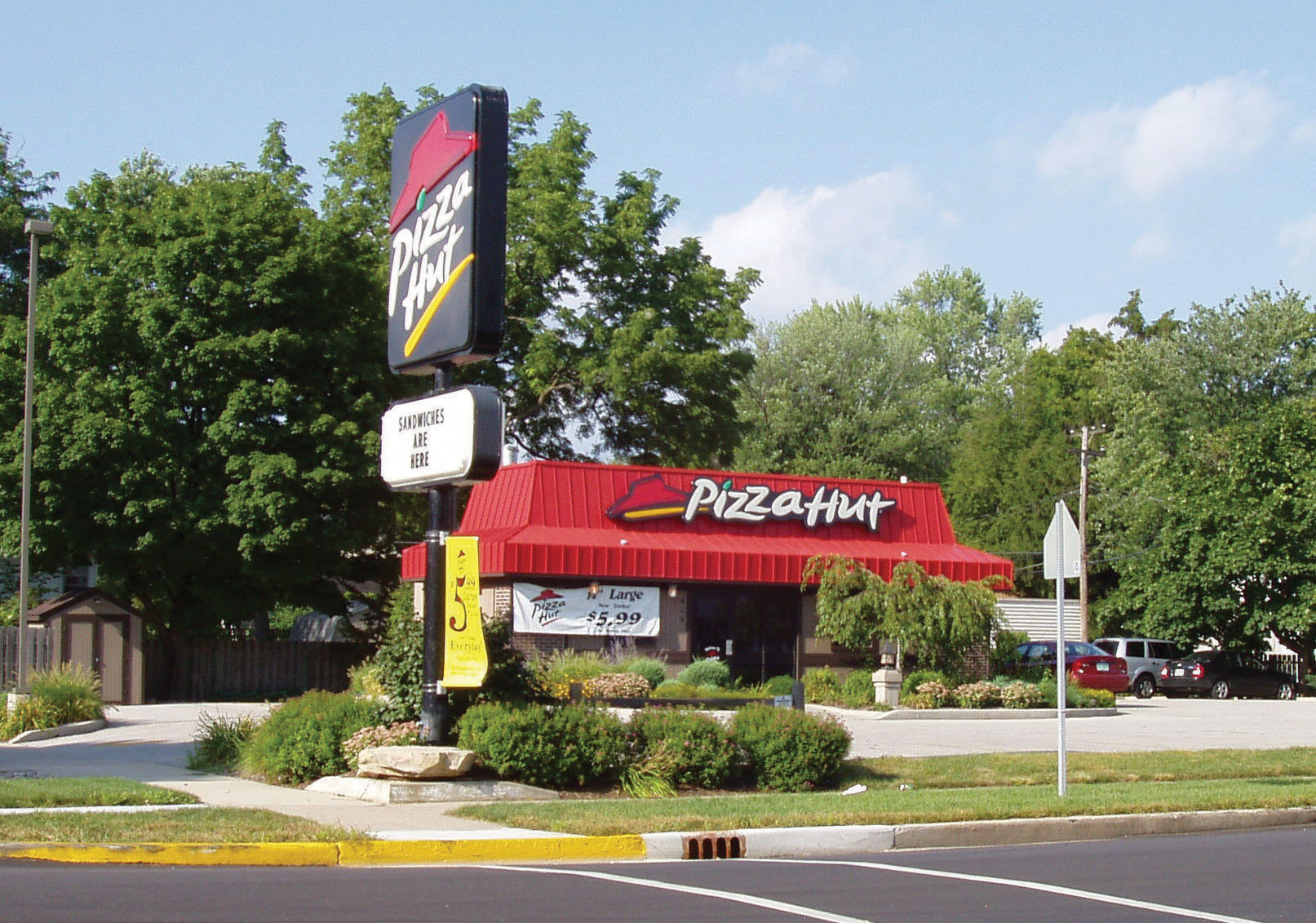3 Defining Strategic Management and Strategy
[Author removed at request of original publisher]
Learning Objectives
- Learn what strategic management is.
- Understand the key question addressed by strategic management.
- Understand why it is valuable to consider different definitions of strategy.
- Learn what is meant by each of the 4 Ps of strategy.
What Is Strategic Management?
Simply put, strategy refers to management’s plan to develop and sustain competitive advantage…..so that a firms’ successful strategies cannot be easily duplicated by its competitors and the firm can achieve its vision and mission.
Strategy is everyone’s job, by the way. Sure, top execs set the overall firm direction, but the people who are close to the customer have much information to bring to bear to effect strategy.
Defining strategy is not simple. Strategy is a complex concept that involves many different processes and activities within an organization.
Strategy as a Plan
Strategic plans are the essence of strategy, according to one classic view of strategy. A strategic plan is a carefully crafted set of steps that a firm intends to follow to be successful. Virtually every organization creates a strategic plan to guide its future.
A business model should be a central element of a firm’s strategic plan. Simply stated, a business model describes the process through which a firm hopes to earn profits. It probably won’t surprise you to learn that developing a viable business model requires that a firm sell goods or services for more than it costs the firm to create and distribute those goods. A more subtle but equally important aspect of a business model is providing customers with a good or service more cheaply than they can create it themselves.
Consider, for example, large chains of pizza restaurants such as Papa John’s and Domino’s.
Franchises such as Pizza Hut provide an example of a popular business model that has been successful worldwide.
Wikimedia Foundation – CC BY 2.0.
Because these firms buy their ingredients in massive quantities, they pay far less for these items than any family could (an advantage called economies of scale). Meanwhile, Papa John’s and Domino’s have developed specialized kitchen equipment that allows them to produce better-tasting pizza than can be created using the basic ovens that most families rely on for cooking. Pizza restaurants thus can make better-tasting pizzas for far less cost than a family can make itself. This business model provides healthy margins and has enabled Papa John’s and Domino’s to become massive firms.
Strategic plans are important to individuals too. Indeed, a well-known proverb states that “he who fails to plan, plans to fail.” In other words, being successful requires a person to lay out a path for the future and then follow that path. If you are reading this, earning a college degree is probably a key step in your strategic plan for your career. Don’t be concerned if your plan is not fully developed, however. Life is full of unexpected twists and turns, so maintaining flexibility is wise for individuals planning their career strategies as well as for firms.
For firms, these unexpected twists and turns place limits on the value of strategic planning. Former heavyweight boxing champion Mike Tyson captured the limitations of strategic plans when he noted, “Everyone has a plan until I punch them in the face.” From that point forward, strategy is less about a plan and more about adjusting to a shifting situation (think the Coronavirus of 2020). For firms, changes in the behavior of competitors, customers, suppliers, regulators, and other external groups can all be sources of a metaphorical punch in the face. As events unfold around a firm, its strategic plan may reflect a competitive reality that no longer exists. Because the landscape of business changes rapidly, other ways of thinking about strategy are needed.
Strategy as a Pattern
Strategy as pattern is a second way to view strategy. This view focuses on the extent to which a firm’s actions over time are consistent. A lack of a strategic pattern helps explain why Kmart deteriorated into bankruptcy in 2002. The company was started in the late nineteenth century as a discount department store. By the middle of the twentieth century, consistently working to be good at discount retailing had led Kmart to become a large and prominent chain.
By the 1980s, however, Kmart began straying from its established strategic pattern. Executives shifted the firm’s focus away from discount retailing and toward diversification. Kmart acquired large stakes in chains involved in sporting goods (Sports Authority), building supplies (Builders Square), office supplies (OfficeMax), and books (Borders). In the 1990s, a new team of executives shifted Kmart’s strategy again. Brands other than Kmart were sold off, and Kmart’s strategy was adjusted to emphasize information technology and supply chain management. The next team of executives decided that Kmart’s strategy would be to compete directly with its much-larger rival, Walmart. The resulting price war left Kmart crippled. Indeed, this last shift in strategy was the fatal mistake that drove Kmart into bankruptcy. Today, Kmart is part of Sears Holding Company, and its prospects remain uncertain.
In contrast, Apple is very consistent in its strategic pattern: It always responds to competitive challenges by innovating. Some of these innovations are complete busts. Perhaps the best known was the Newton, a tablet-like device that may have been ahead of its time. Another was the Pippin, a video game system introduced in 1996 to near-universal derision. Apple TV, a 2007 offering intended to link televisions with the Internet, also failed to attract customers. Such failures do not discourage Apple, however, and enough of its innovations are successful that Apple’s overall performance is excellent. However, there are risks to following a pattern too closely. A consistent pattern can make a company predictable, a possibility that Apple must guard against in the years ahead.
Strategy as a Position
Viewing strategy as a plan and a pattern involve only the actions of a single firm. In contrast, the next P—strategy as position—considers a firm and its competitors. Specifically, strategy as position refers to a firm’s place in the industry relative to its competitors. McDonald’s, for example, has long been and remains the clear leader among fast-food chains. This position offers both good and bad aspects for McDonald’s. One advantage of leading an industry is that many customers are familiar with and loyal to leaders. Being the market leader, however, also makes McDonald’s a target for rivals such as Burger King and Wendy’s. These firms create their strategies with McDonald’s as a primary concern. Old Navy offers another example of strategy as position. Old Navy has been positioned to sell fashionable clothes at competitive prices.
Old Navy occupies a unique position as the low-cost strategy within the Gap Inc.’s fleet of brands.
Lindsey Turner – clearance – CC BY 2.0.
Old Navy is owned by the same corporation (Gap Inc.) as the midlevel brand the Gap and upscale brand Banana Republic. Each of these three brands is positioned at a different pricing level. The firm hopes that as Old Navy’s customers grow older and more affluent, they will shop at the Gap and then eventually at Banana Republic. A similar positioning of different brands is pursued by General Motors through its Chevrolet (entry level), Buick (midlevel), and Cadillac (upscale) divisions.
Firms can carve out a position by performing certain activities in a different manner than their rivals. For example, Southwest Airlines is able to position itself as a lower-cost and more efficient provider by not offering meals that are common among other airlines. In addition, Southwest does not assign specific seats. This allows for faster loading of passengers. Positioning a firm in this manner can only be accomplished when managers make trade-offs that cut off certain possibilities (such as offering meals and assigned seats) to place their firms in a unique strategic space. When firms position themselves through unique goods and services customers value, business often thrives. But when firms try to please everyone, they often find themselves without the competitive positioning needed for long-term success. Thus deciding what a firm is not going to do is just as important to strategy as deciding what it is going to do (Porter, 1996).
To gain competitive advantage and greater success, firms sometimes change positions. But this can be a risky move. Winn-Dixie became a successful grocer by targeting moderate-income customers. When the firm abandoned this established position to compete for wealthier customers and higher margins, the results were disastrous. The firm was forced into bankruptcy and closed many stores. Winn-Dixie eventually exited bankruptcy, but like Kmart, its future prospects are unclear. In contrast to firms such as Winn-Dixie that change positions, Apple has long maintained a position as a leading innovator in various industries. This positioning has served Apple well.
Strategy as a Perspective
The final P shifts the focus to inside the minds of the executives running a firm. Strategy as perspective refers to how executives interpret the competitive landscape around them. Because each person is unique, two different executives could look at the same event—such as a new competitor emerging—and attach different meanings to it. One might just see a new threat to his or her firm’s sales; the other might view the newcomer as a potential ally.
An old cliché urges listeners to “make lemons into lemonade.” A good example of applying this idea through strategy as perspective is provided by local government leaders in Sioux City, Iowa. Rather than petition the federal government to change their airport’s unusual call sign—SUX—local leaders decided to leverage the call sign to attract the attention of businesses and tourists to build their city’s economic base. An array of clothing and other goods sporting the SUX name is available at http://www.flysux.com. Some strategists such as these local leaders are willing to take a seemingly sour situation and see the potential sweetness, while other executives remain fixated on the sourness.
Executives who adopt unique and positive perspectives can lead firms to find and exploit opportunities that others simply miss. In the mid-1990s, the Internet was mainly a communication tool for academics and government agencies. Jeff Bezos looked beyond these functions and viewed the Internet as a potential sales channel. After examining a number of different markets that he might enter using the Internet, Bezos saw strong profit potential in the bookselling business, and he began selling books online. Today, the company he created—Amazon—has expanded far beyond its original focus on books to become a dominant retailer in countless different markets. The late Steve Jobs at Apple appeared to take a similar perspective; he saw opportunities where others could not, and his firm has reaped significant benefits as a result.
Key Takeaway
- Strategic management focuses on firms and the different strategies that they use to become and remain successful. Multiple views of strategy exist, and the 4 Ps described by Henry Mintzberg enhance understanding of the various ways in which firms conceptualize strategy.
Exercises
- Have you developed a strategy to manage your career? Should you make it more detailed? Why or why not?
- Identify an example of each of the 4 Ps of strategy other than the examples offered in this section.
- What business that you visit regularly seems to have the most successful business model? What makes the business model work?
References
Markoff, J. 1996, May 14. Apple unveils strategic plan of small steps. New York Times. Retrieved from http://www.nytimes.com/1996/05/14/business/apple-unveils-strategic -plan-of-small-steps.html.
Mintzberg, H. 1987. The strategy concept I: Five Ps for strategy. California Management Review, 30(1), 11–24.
Porter, M. E. 1996, November–December. What is strategy? Harvard Business Review, 61–79.
Reuters. 2011, March 1. Philadelphia area pizza owner used mice vs. competition—police. Retrieved from news.yahoo.com/s/nm/20110301/od_uk_nm/oukoe_uk_crime_pizza.



